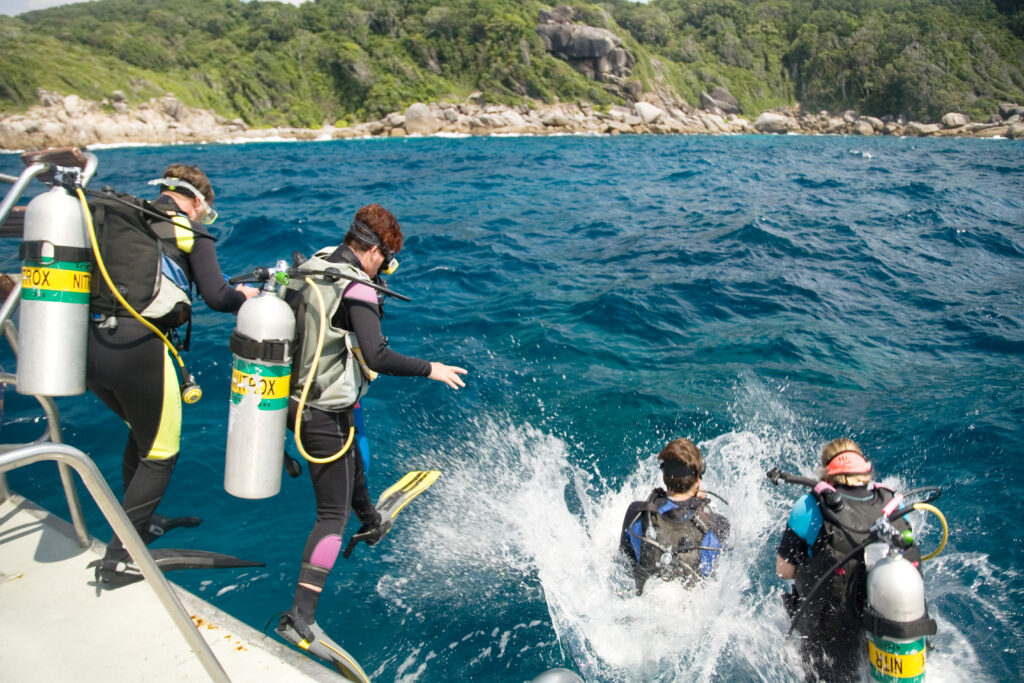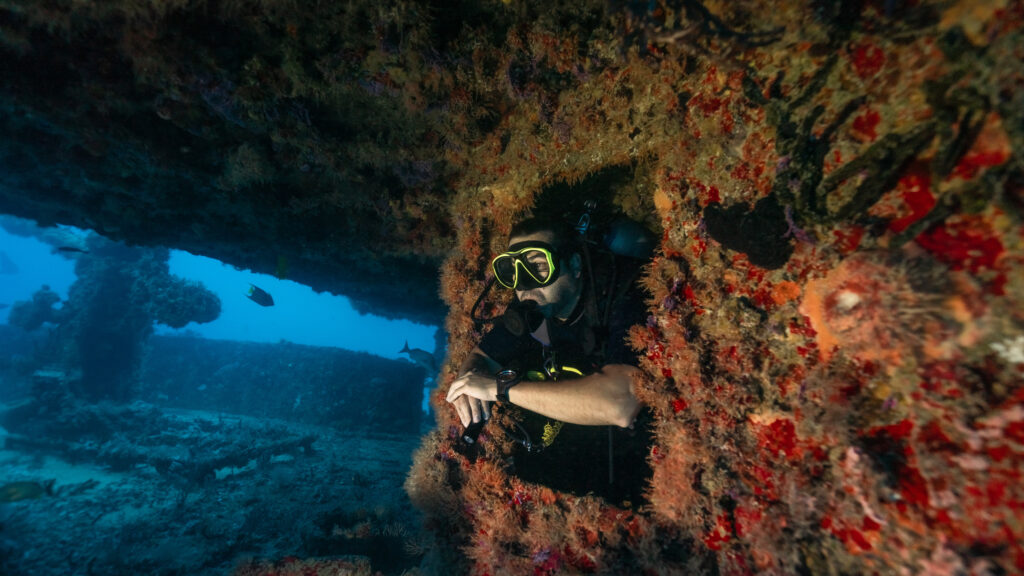What Is Scuba Diving All About? – Discover the Magic Underwater World, One Breath at a Time

Imagine a world where gravity is suspended, vibrant colors and mesmerizing creatures abound, and the only sound is your own breathing. Welcome to the exhilarating world of scuba diving. In this article, we will delve deep into the blue, exploring the fundamentals of this thrilling adventure sport that’s captured the hearts of millions worldwide. The […]
What is Deep Diving?

Deep diving is a specialized category of scuba diving that involves descending beyond 18 meters (60 feet) underwater.
What is a Safety Stop during Scuba Diving?

A safety stop is a voluntary pause during a diver’s ascent, usually lasting around 3 minutes and occurring at a depth of approximately 5 meters (15 feet).
What is a Scuba Diver?

What is a Scuba Diver? A scuba diver is a person who engages in the recreational or professional activity of swimming underwater using SCUBA equipment. The term “scuba” is an acronym for “self-contained underwater breathing apparatus,” which allows scuba divers to breathe comfortably beneath the water’s surface while exploring the aquatic world at their leisure. […]
What is Scuba Diving?

Scuba diving is a recreational and professional activity where individuals explore underwater environments using self-contained underwater breathing apparatus (SCUBA) equipment. This equipment allows divers to stay underwater for extended periods, enabling them to experience marine life, shipwrecks, caves, and other submerged wonders. The ability to explore these otherwise inaccessible areas has made scuba diving a popular pursuit for adventure enthusiasts, marine biologists, and professional divers alike. Since its modern development in the 20th century, scuba diving has attracted millions of people globally, offering a unique blend of excitement, discovery, and tranquility beneath the waves.
What is Hypoxia when Scuba Diving?

Hypoxia, defined as a deficiency of oxygen in the body, is a significant concern for scuba divers, as it can impair vital bodily functions, reduce consciousness, and lead to life-threatening conditions. This medical issue becomes especially relevant in the context of scuba diving, where a diver’s environment and the unique breathing conditions can increase the likelihood of insufficient oxygen levels. Hypoxia is not always immediately apparent, but recognizing and understanding its causes, symptoms, and prevention strategies can help divers stay safe underwater.
What is a Rebreather?

A rebreather is a sophisticated and technologically advanced piece of diving equipment that allows divers to maximize their time underwater while minimizing the environmental impact of their dive. Unlike traditional open-circuit scuba systems, which release exhaled air into the water, rebreathers filter and recirculate the exhaled air, allowing divers to breathe the same air multiple times. This closed-circuit system significantly reduces the amount of gas consumed during a dive and enables divers to explore deeper depths and stay submerged for longer periods. However, using a rebreather requires specialized training and knowledge to ensure safe and efficient operation.
What is an Electro Galvanic Fuel Cell (EGFC)?

An electro galvanic fuel cell (EGFC) is a type of electrochemical sensor used extensively in scuba diving equipment for oxygen monitoring. It operates based on the principle of generating an electrical current through a chemical reaction between oxygen and a fuel, typically a metal like lead or zinc. The current produced is directly proportional to the amount of oxygen present, making EGFCs crucial for ensuring safe breathing gas mixtures in underwater environments. This entry delves into the fundamental principles, historical development, technical specifications, applications in scuba diving, maintenance practices, and regulatory considerations of electro galvanic fuel cells.
What is the Maximum Operating Depth?

Maximum Operating Depth (MOD) is a critical concept in the field of scuba diving. It refers to the deepest depth at which a particular gas mixture can be used safely without the diver experiencing oxygen toxicity. Understanding and adhering to the MOD is essential for ensuring diver safety and preventing potentially life-threatening conditions. MOD varies depending on the gas mixture being used and is influenced by the partial pressure of oxygen within the breathing gas. By comprehending the significance of MOD, divers can plan their underwater excursions more effectively and reduce the risks associated with diving to greater depths.
What is Mixed Gas?

Mixed gas, in the context of scuba diving, refers to breathing gases other than air, which are used to extend bottom time, reduce decompression obligations, and manage the risks associated with deep diving. These mixtures can include combinations of oxygen, nitrogen, helium, and other inert gases, tailored to specific diving conditions and depths. By using mixed gases, divers can safely reach greater depths and explore environments that would otherwise be inaccessible due to the limitations of breathing air alone.
